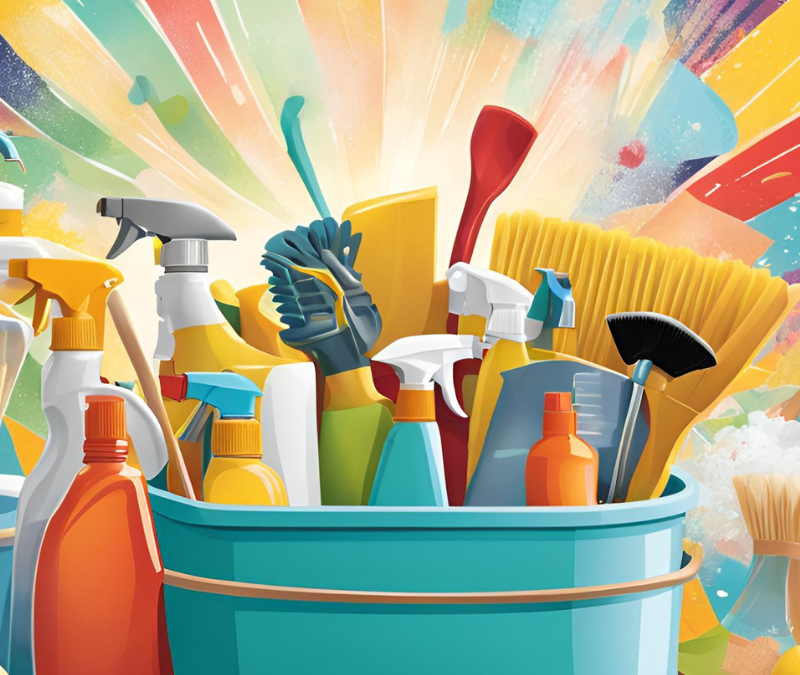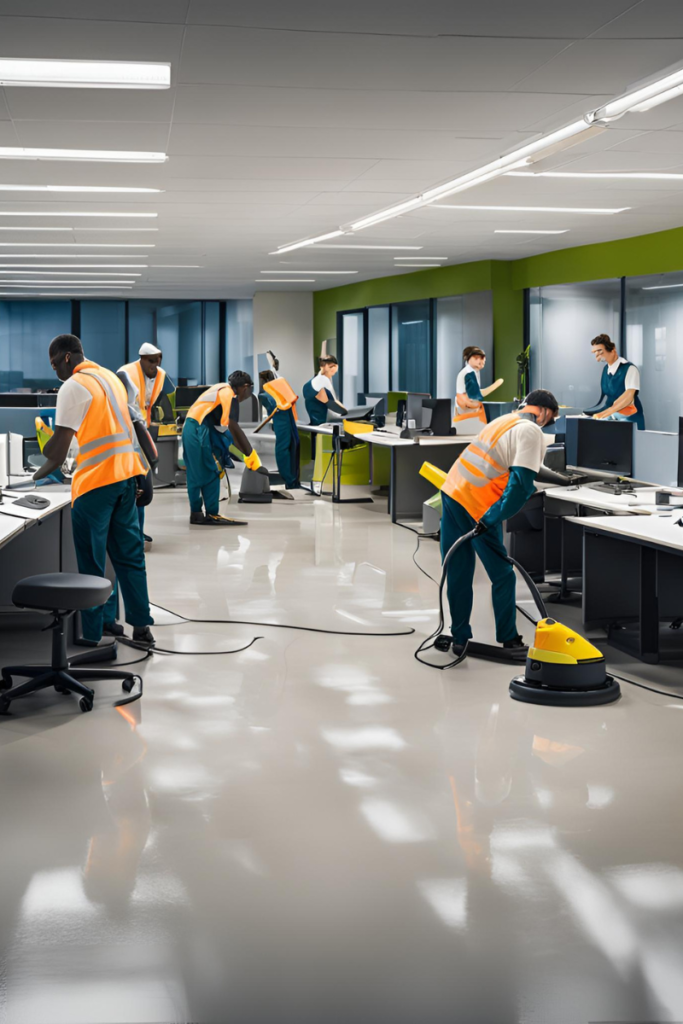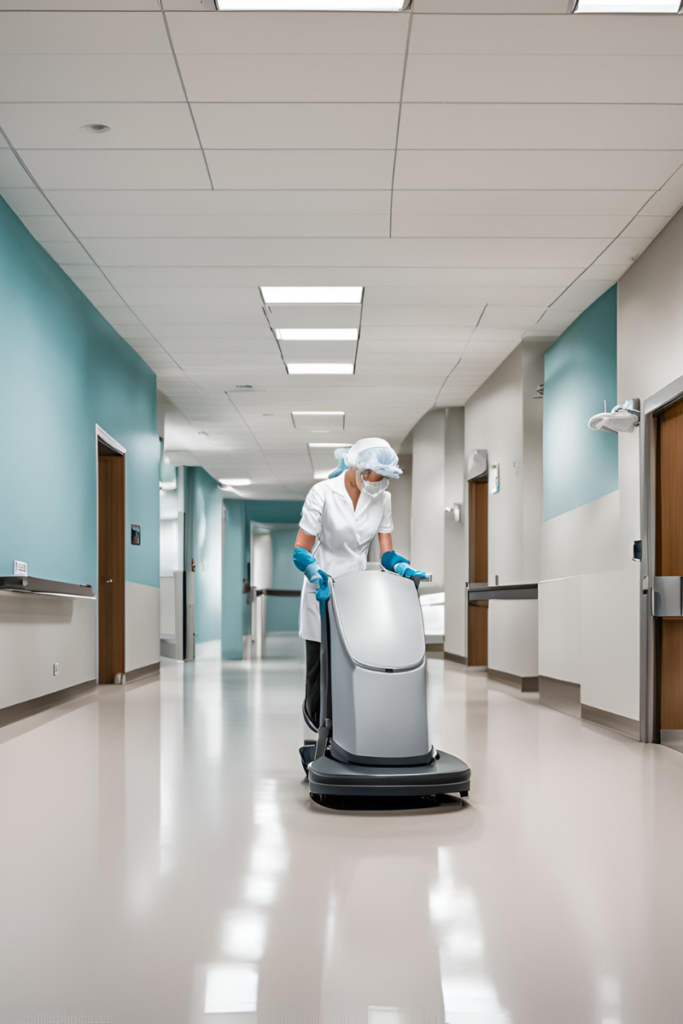
Introduction
In healthcare settings, cleanliness isn’t just about appearances; it’s about ensuring safety, preventing the spread of infections, and maintaining regulatory compliance. Healthcare facilities, including hospitals, clinics, long-term care homes, and outpatient centers, must adhere to rigorous cleaning standards to protect patients, staff, and visitors from harmful pathogens. However, achieving this level of cleanliness requires more than just basic cleaning procedures. It demands comprehensive strategies that incorporate the latest cleaning technologies, best practices, and a deep understanding of healthcare regulations.
At Arise Facility Solutions, we specialize in providing high-quality, compliance-focused cleaning services to healthcare facilities. In this blog post, we’ll discuss the most effective cleaning strategies for healthcare facilities, the importance of maintaining cleanliness for patient and staff safety, and how we help our clients stay compliant with healthcare cleaning regulations.
Request A FREE Quotation. Now!
Why Cleanliness in Healthcare Facilities is Crucial
Healthcare facilities are among the most critical environments where cleanliness and sanitation must be a top priority. The consequences of neglecting proper cleaning can be devastating, leading to healthcare-associated infections (HAIs), compromised patient safety, and even legal ramifications for non-compliance with health regulations.
The risk of cross-contamination
Cross-contamination is a significant risk in healthcare environments. Bacteria, viruses, and other harmful microorganisms can easily spread from one surface to another if cleaning protocols are not followed meticulously. Effective cleaning strategies help minimize this risk by using appropriate disinfectants and cleaning methods that target specific pathogens.
Regulatory compliance
Healthcare facilities must comply with a host of regulations set by governmental bodies, including the Centers for Disease Control and Prevention (CDC), the World Health Organization (WHO), and local health authorities. Non-compliance with these regulations can lead to hefty fines, penalties, or, worse, the closure of facilities. A strong cleaning strategy not only protects patient health but also ensures compliance with these standards.
Key Cleaning Strategies for Healthcare Facilities
Here are some of the most effective and comprehensive cleaning strategies that healthcare facilities should implement to ensure safety and compliance.
1. Implementing a Robust Cleaning Schedule
The first step in ensuring that a healthcare facility remains clean is to establish a clear and detailed cleaning schedule. A consistent and thorough cleaning routine is crucial for preventing the accumulation of harmful pathogens and debris.

How to do it:
- Daily cleaning tasks: Focus on high-touch surfaces like doorknobs, light switches, countertops, and patient beds.
- Weekly deep cleaning: Includes floor scrubbing, curtain washing, and the cleaning of less frequently touched areas.
- Monthly cleaning tasks: Intensive cleaning of HVAC systems, vents, and other large equipment.
- Post-discharge cleaning: After a patient is discharged, the room should undergo a detailed sanitization procedure to prevent cross-contamination between patients.
Using a detailed schedule ensures that no area of the facility is neglected, helping to maintain high levels of cleanliness at all times.
2. Adopting Hospital-Grade Cleaning Products
Not all cleaning products are suitable for healthcare settings. To ensure the removal of harmful bacteria and viruses, hospitals and clinics must use hospital-grade disinfectants that are EPA-approved and effective against a wide range of pathogens.
How to do it:
- Use cleaning agents that are proven to be effective against resistant strains of bacteria like MRSA and C. difficile.
- Ensure that disinfectants are used according to manufacturer guidelines for efficacy, including dwell time (the time the disinfectant needs to remain on the surface to be effective).
- Utilize eco-friendly and non-toxic cleaning agents where possible to minimize the environmental impact and avoid triggering allergies or sensitivities in patients and staff.
At Arise Facility Solutions, we prioritize using disinfectants that not only meet regulatory standards but also protect the health of all individuals within the facility.
3. Focus on High-Touch Areas
High-touch surfaces are areas that are frequently touched by hands and are prime carriers of germs. These include doorknobs, elevator buttons, handrails, patient beds, etc. Cleaning and disinfecting these areas frequently can help reduce the spread of pathogens.
How to do it:
- Create specific cleaning protocols for high-touch areas, ensuring they are cleaned at regular intervals throughout the day.
- Use wipes, sprays, or mops with disinfectants to clean these areas, depending on the surface material.
By paying special attention to these high-contact points, healthcare facilities can dramatically reduce the likelihood of cross-contamination.
Request A FREE Quotation. Now!
4. Staff Training and Education
A critical component of any healthcare facility cleaning strategy is ensuring that staff members are well-trained in cleaning procedures, infection control protocols, and the safe handling of cleaning chemicals.
How to do it:
- Conduct regular training on cleaning techniques, infection control guidelines, and safety procedures.
- Include training on how to properly use personal protective equipment (PPE) like gloves, masks, and gowns to prevent exposure to hazardous substances.
- Ensure that staff members understand the importance of hand hygiene, as improper hand washing or sanitization can lead to cross-contamination.

At Arise Facility Solutions, we regularly train our cleaning personnel to ensure they meet the highest standards in healthcare facility cleaning.
5. Using the Right Tools and Equipment
The right tools and equipment can make a significant difference in how effectively a healthcare facility is cleaned. High-powered vacuums, microfiber cloths, and UV sterilizers can help to improve the quality of cleaning and infection prevention.
How to do it:
- Use HEPA-filter vacuums to capture airborne dust and allergens.
- Opt for microfiber cloths and mops, which are proven to capture more dirt and bacteria than traditional cleaning tools.
- Consider the use of UV light technology for disinfection in sensitive areas, such as patient rooms and operating theatres. UV light can kill bacteria and viruses without the need for chemical disinfectants.
- Investing in the best tools and technologies ensures that your cleaning efforts are not only effective but also efficient.
6. Routine Inspections and Audits
Routine inspections help to monitor the effectiveness of cleaning strategies. These audits allow healthcare facilities to spot areas that may have been missed or not cleaned properly.
- How to do it:
- Conduct random and scheduled audits of cleaning processes to ensure adherence to protocols.
- Use checklists for inspection to ensure that no area is overlooked.
- If flaws are discovered, take corrective action, such as retraining employees or changing cleaning schedules.
- Regular inspections and audits help maintain cleanliness and ensure that all cleaning protocols are being followed.
7. Disinfection After Patient Care Procedures
Some areas of the healthcare facility will need to be disinfected immediately after patient care procedures. For example, surgical rooms, patient rooms with infected individuals, and isolation rooms require immediate attention to prevent the spread of pathogens.
How to do it:
- Follow CDC and WHO guidelines for cleaning and disinfection in specialized environments such as operating rooms.
- Use high-level disinfectants and sterilize equipment and surfaces according to regulatory guidelines.
- The disinfection process in these high-risk areas must be rigorous to prevent any cross-contamination.
The Role of Arise Facility Solutions in Healthcare Facility Cleaning
At Arise Facility Solutions, we understand the complexities involved in cleaning healthcare facilities. Our goal is to provide you with comprehensive cleaning strategies that not only ensure a clean and safe environment but also ensure that your facility stays compliant with industry regulations.
We offer:
Cleaning schedules that are suited to your healthcare facility’s specific needs.Trained and experienced staff who understand the critical nature of healthcare facility cleaning. High-quality cleaning products and equipment that meet or exceed industry standards.Routine audits and inspections to ensure compliance. Our expert cleaning services give you the peace of mind that your facility is safe, clean, and compliant with all relevant regulations.
Request A FREE Quotation. Now!
Frequently Asked Questions (FAQs)
1. What are the most important cleaning areas in healthcare facilities?
Ans: High-touch surfaces such as doorknobs, light switches, patient beds, and shared equipment should be prioritized for cleaning.
2. How frequently must a medical facility to be cleaned?
Ans: Healthcare facilities should have a detailed cleaning schedule that includes daily cleaning of high-touch surfaces, weekly deep cleaning, and monthly intensive cleaning of less frequently used areas. Post-discharge cleaning is essential for patient rooms to avoid cross-contamination.
3. What is the difference between cleaning and disinfection in healthcare settings?
Ans: Cleaning removes dirt, debris, and some bacteria, whereas disinfection involves killing harmful microorganisms that remain after cleaning. Both steps are crucial for maintaining a safe healthcare environment.
4. How can I ensure that my healthcare facility stays compliant with cleaning regulations?
Ans: Ensure that you use the appropriate cleaning products, adhere to recommended cleaning frequencies, and regularly train your cleaning staff. Audits and inspections should be conducted to ensure compliance with all regulatory requirements.
5. What are the best cleaning products for healthcare environments?
Ans: Hospital-grade disinfectants that are EPA-approved and effective against a broad range of pathogens are essential. Products should also be safe for patients and staff, with minimal toxic exposure.
6. How can Arise Facility Solutions help my healthcare facility?
Ans: We provide customized, compliant cleaning services, use advanced cleaning products and equipment, and train our staff to meet the highest standards. Our services are designed to protect the health of patients, staff, and visitors while ensuring your facility stays in compliance.
conclusion
In conclusion, effective cleaning strategies are critical to ensuring a safe and compliant healthcare environment. By following the guidelines and strategies outlined
Written By: Keshav Dixit
